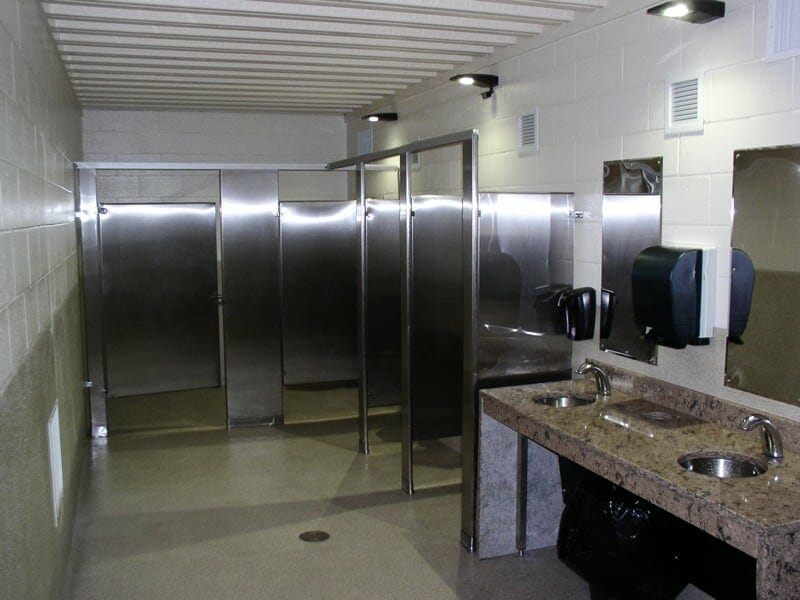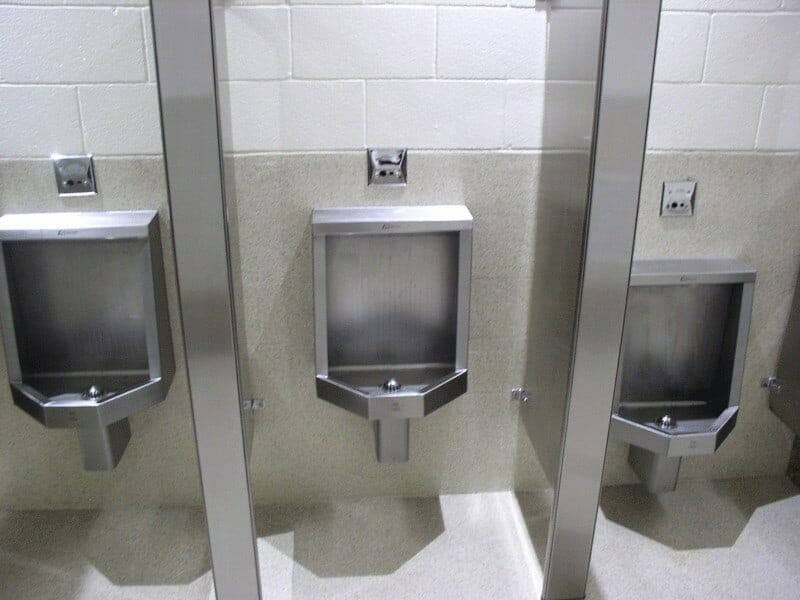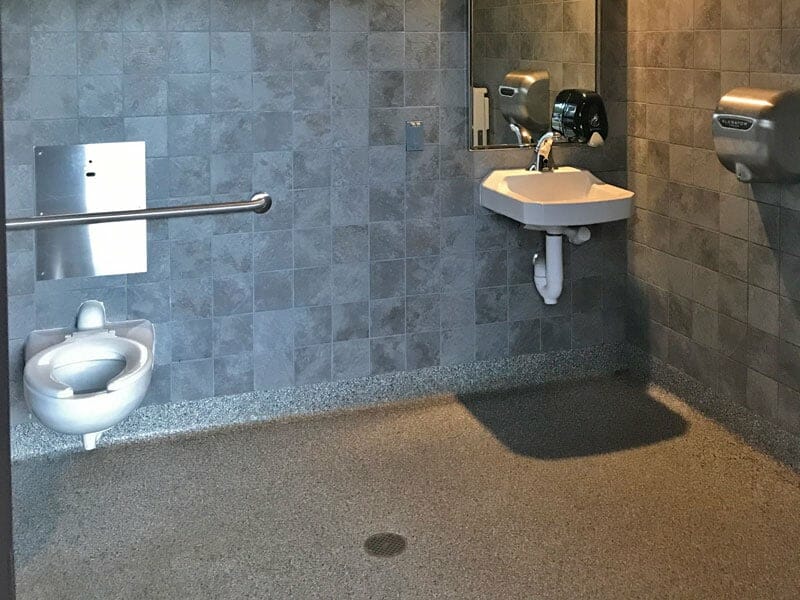
Romtec designs, supplies, and constructs buildings and structures for many different types of applications. Frequently, these buildings are for public use and must meet or exceed federal and state code requirements. One typical code requirement for restroom buildings is the need for smooth, washable surfaces in specific areas of the interior. These are hard, non-porous, and non-absorbent materials that are easy to clean and are available in many different styles.
Meeting Code Requirements
The interior of most public restrooms are exposed to a lot of water and can be prone to bacterial growth, mold, and mildew. This is why non-porous and moisture resistant materials are required in some areas, but choosing to use them throughout the restroom is an easy way to increase the cleanliness of your restroom. Codes require that interior walls must be hard and non-absorbent on all walls up to 6” from the floor. However, the walls next to water fixtures like urinals, sinks, and toilets must have the same material up to 4’ from the floor. This same rule applies to shower stall surfaces, but the non-porous material must raise 70” from the shower’s drain. While not always required, using these materials contiguously can help a restroom achieve a cohesive style.

Cost Effective Options for Non-Porous Surfaces
There are several interior surface materials that can be used to meet these requirements. Fiberglass Reinforced Plastic or FRP is very common and easy to install. FRP is a lightweight material that is typically bolted to CMU walls. It comes in many colors and styles, and some options can even be made to look like tile. Another cost-effective option is painted CMU walls. Paint is a versatile option that is available in many colors and can even include anti-graffiti coatings. There are also wall tiles. Tiles are available in many different styles and looks. Unique designs can be created with two or more types of tiles arranged in a pattern, or they can be used to match floor tiles or other design features. One downside of choosing tile is grout lines, these are ideal places for moisture and bacteria to take hold and require regular treating or cleaning. While certain areas of walls are required to be impermeable, floors are not.
Choosing a Form of Sealant to Protect Porous Surfaces
Romtec recommends choosing a form of sealant to use on restroom floors. Unsealed concrete, while an affordable option, is a porous surface. The pores in the concrete collect moisture, particulate matter, and bacteria that lead to stains and create odors. Concrete can be sealed with sealant, paint/epoxy, or tiles can be used. Choosing a tile floor can open up many design options like imitating hardwood or matching other restroom interiors in your park or city. While tile can be used to create an elegant interior, sealed flooring materials benefit the maintenance, appearance, and hygiene of a restroom facility. Epoxy sealing concrete floors is common in many applications where hygiene and durability are important. These floors offer the best water resistance and can be mixed to create a wide range of custom colors. Both tile and epoxy sealed concrete floors are easier to clean than a standard concrete slab and these surfaces will continue to look great for years to come.

All of these non-porous surface materials will help meet some code requirements, and additionally, they can be combined to create unique looks for the building. When using an experienced design-build firm like Romtec, our customers gain the benefit of years of experience designing public buildings. We know firsthand what works best in public restrooms, especially for maintenance and building operation. Choosing to use non-porous surfaces throughout the restroom will continuously save time and money related to cleaning, and it will also help your building look great. Contact Romtec today and learn about all of our interior surface options.
